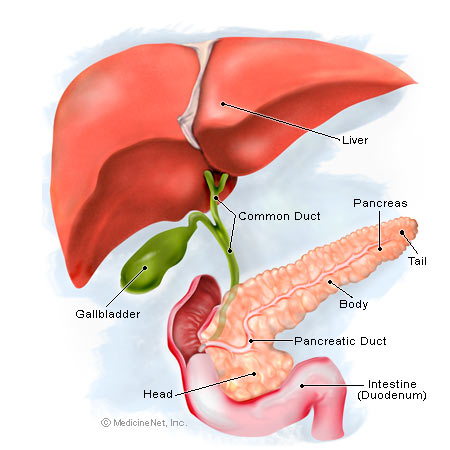|
What is the Pancreas?Many people know its name, but couldn't tell anyone much about it. It gets attention primarily for its role in producing insulin. But that's not all it does...
It is composed of three sections: the wide end of the pancreas on the right side of the body is called the head; the middle section is the body and the thin end of the pancreas on the left side of the body is called the tail. Attached to the muscles and tissues near your back, the pancreas has two very different roles, the exocrine and endocrine functions. Exocrine cells of the pancreas produce enzymes that help with digestion. When food enters the stomach, exocrine cells release digestive enzymes into a system of ducts which lead to the main pancreatic duct. The pancreatic duct empties the enzymes into the first portion of the small intestine called the duodenum, where the enzymes aid in the digestion of fats, carbohydrates and proteins in foods. The second function of the pancreas is the endocrine function, which involves the production of hormones. The two key hormones are insulin and glucagon, which are released into the bloodstream and together, they regulate the level of glucose (sugar) in your blood. Insulin serves to lower blood sugar levels while glucagon raises blood sugar levels. if the insulin secreting cells do not work properly, diabetes occurs.
In this Section:Signs and Symptoms
|






 The pancreas is a glandular organ that is vital for digestion and sugar control. It is located quite high up in your abdomen and lies across your body behind your stomach and in front of the spine. It is about 6 inches long and shaped like a flat pear.
The pancreas is a glandular organ that is vital for digestion and sugar control. It is located quite high up in your abdomen and lies across your body behind your stomach and in front of the spine. It is about 6 inches long and shaped like a flat pear.